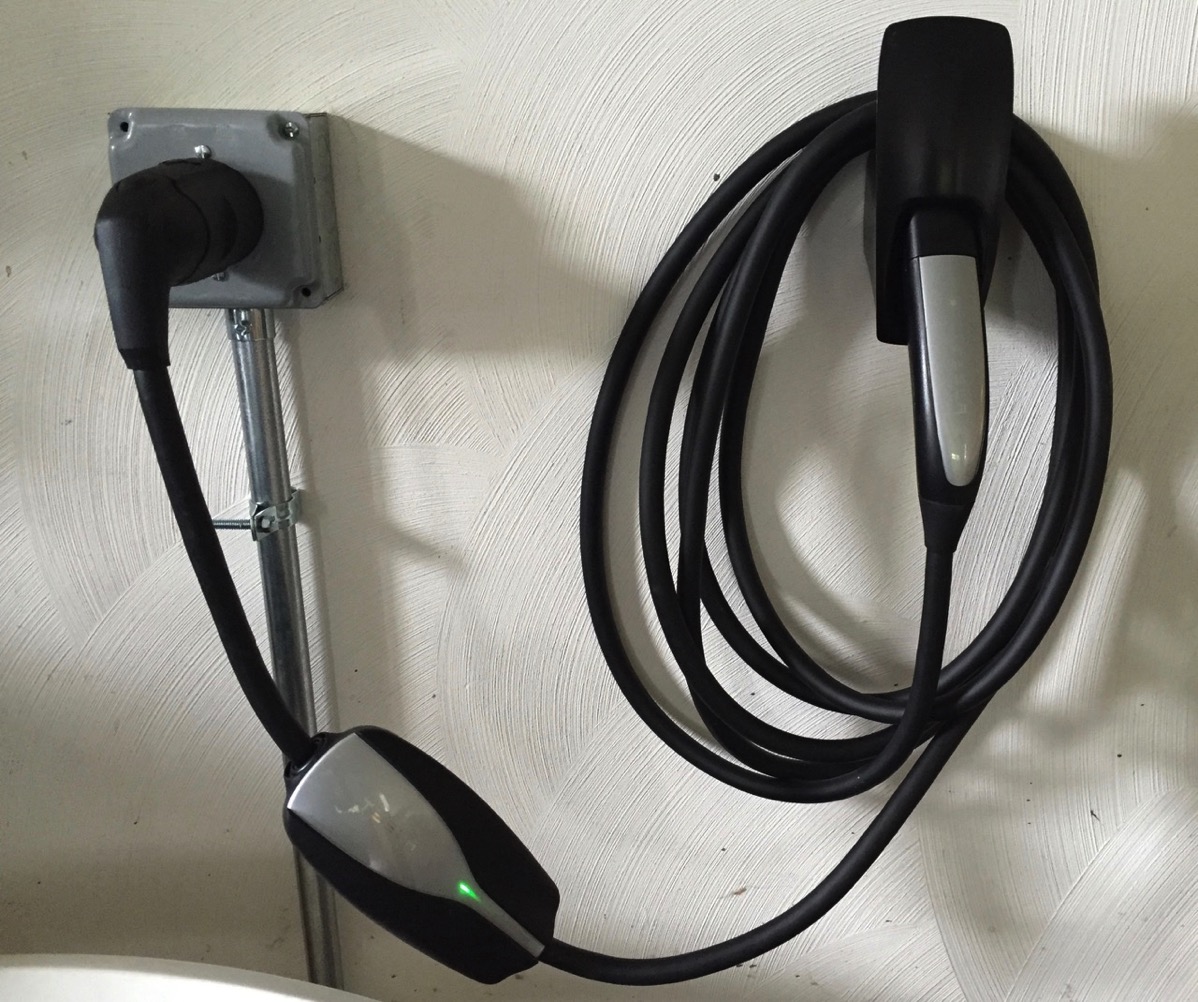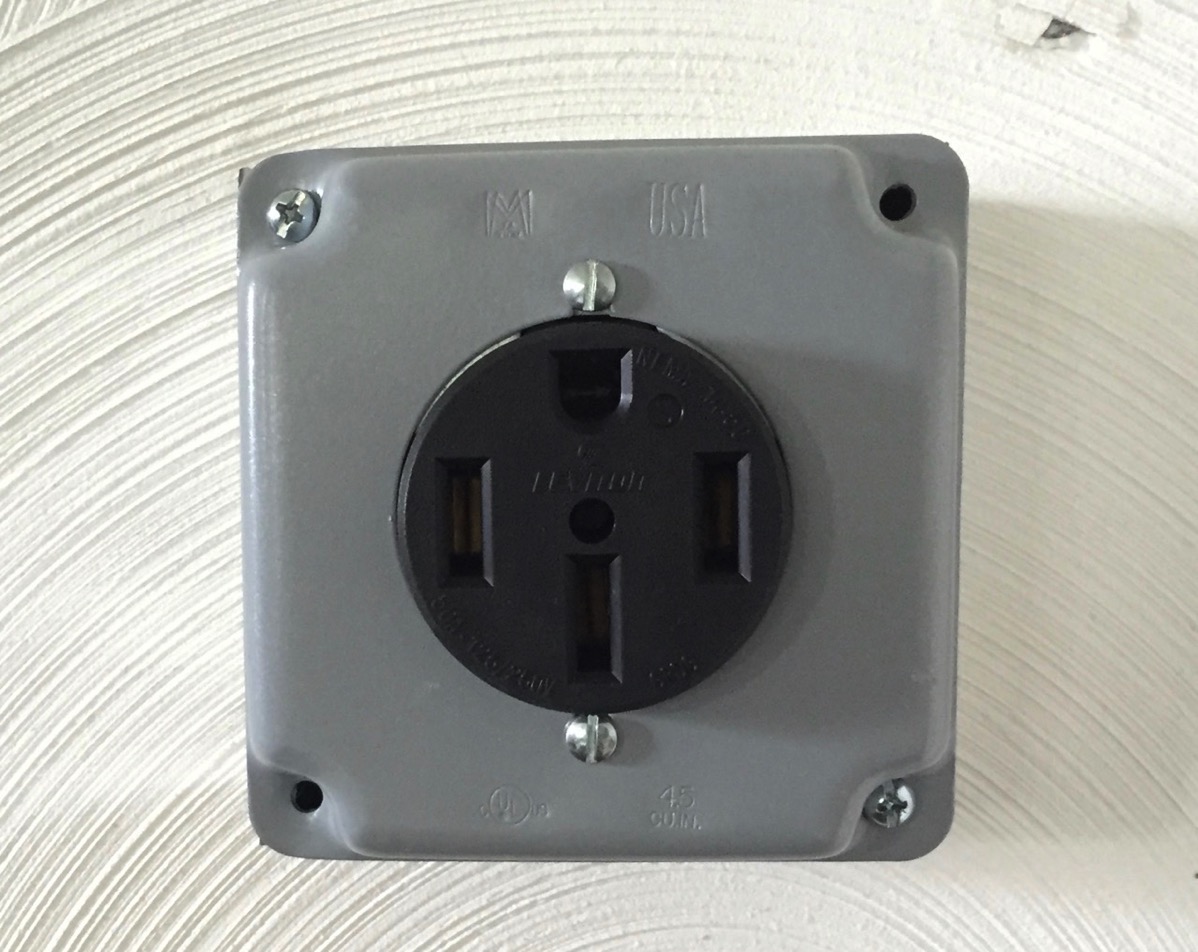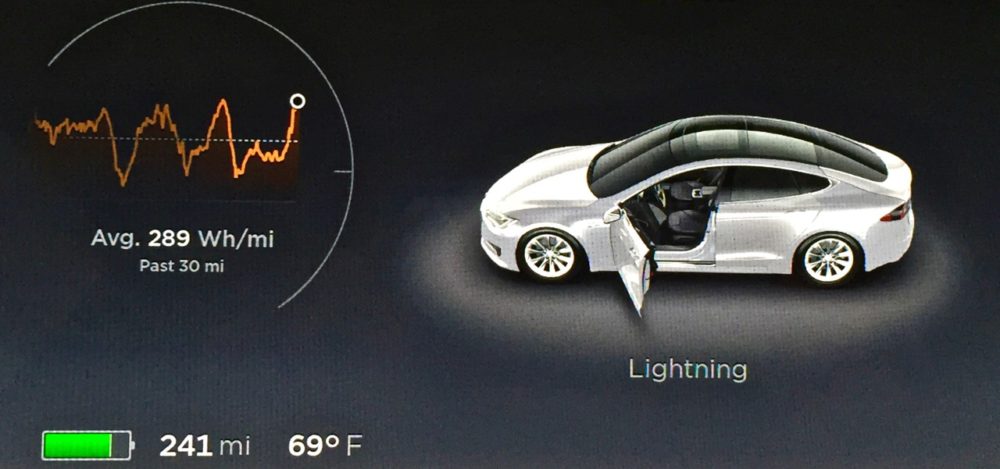
Odometer: 101 miles
Another frequently asked question about our car is “How do you charge it? Do you just plug it into the wall?” The answer to that is yes, but you really need the right plugs on your wall.
I brought in an electrician as soon as we ordered our Tesla to prepare our garage for electric cars. Here’s how we approached the problem:
- We upgraded our main power panel. We put in solar cells as the first step in our going green initiative, and as a result of that and other home upgrade initiatives, our main 200A breaker panel was one breaker short of what we needed to install our garage outlets. Given that the main breaker panel was more than 20 years old, we bit the bullet and had the electrician install a modern one that will give us a lot more room for more circuits.
- We installed two new 240 volt, 50 amp NEMA 14-50 circuits (see right).

Once the new panel was in, the electrician installed two 50 amp breakers in the subpanel we had installed for our air conditioning system. Those NEMA 14-50 plugs allow us to charge our Tesla at 40 amps, which adds range at about 29 miles per hour. Said another way, these plugs will fill the battery from empty in around 10 hours. We decided to go with NEMA 14-50 instead of a Tesla Wall-Mounted Charger as a form of future proofing the installation. While we love our Tesla, it’s conceivable we or our guests might want to charge other types of electric cars that don’t use a Tesla connector. With standard connectors in the garage, we retain flexibility. - We bought a second Tesla Mobile Connector to charge the car. The car comes with a Mobile Connector bundle that allows the car to charge from 110 volt (NEMA 5-15), 240 volt (NEMA 14-50), and J1772-compatible power sources. We leave that one in the car, and we have a dedicated second connector that hangs on our wall as shown in the photo at the top of the post. That way we never forget to pack the charging cable, and we can organize the cables a bit more tidily at home (although the photo shows I’m not yet that good at that).
Important installation tip: Some electricians will orient the NEMA 14-50 connector with the square ground lug at the bottom, just as it would be on a 110-volt outlet. Don’t let them do that; if you do, your Mobile Connector will be upside down. You want it the way it’s shown in the photo above.

Actually charging the car is a dead simple process once you learn it:
- Double click the button on the mobile connector cable. That will tell the Tesla to open and light up its charging port. It should glow white at this point.
- Insert the connector firmly into the charging port. If you plug it all the way in, the car will begin charging and the port will pulse green to indicate it is charging. Fast pulsing indicates fast charging, but it will slow as the battery approaches “full”.
- When the port stops pulsing green, or your mobile app or touchscreen notify you that charging is done, click the connector button to unlock and unplug the car. The charging connector is locked into the port while charging, so the button push requests permission to unplug. When the port turns white, you can unplug the connector.
If we arrived home with an empty battery, it would take about 10 hours to charge the battery to full. However, we plan to never arrive home empty, and we almost never charge the battery to full unless we’re going on a trip. My charging model is to model 80% of battery capacity as “full” and 20% of battery capacity as “empty.” Only charging to 80% routinely extends the life of the battery, while assuming 20% charge as empty provides lots of range (about 60 miles) to find somewhere to charge.
The prime directive of battery management is that you’d rather be too full than too empty. Running out of battery charge is much much worse than running out of gas; it will likely involve a flat-bed truck to tow the car and could damage the battery itself. You should view running out of charge in a Tesla with the same concern you’d have about running out of gas in an airplane: it’s a very bad thing.
